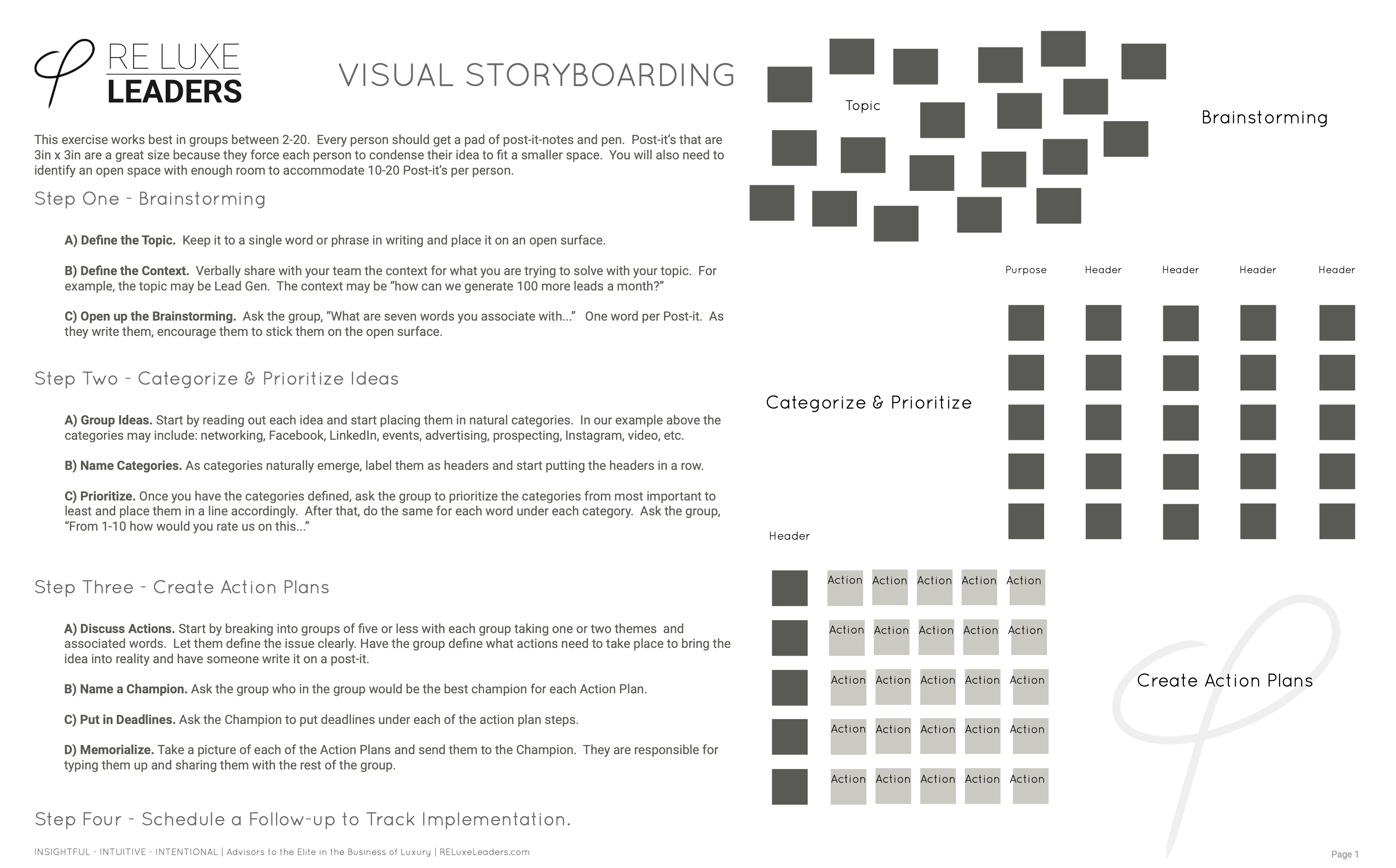Tools and Downloads
Our Visual Storyboarding Template is one of our tools we use with brokers, managers and team leaders in our Private Client coaching program. We believe in measuring progress and stepping back from time to time and evaluating how to improve. The Visual Storyboarding Template is an 11×17 PDF file which gives you and your team a process to take brainstorming to the next level.
Philosophy and Methodology
We are really intentional in our own lives and encourage our clients to live in the same. With that said, our tools and core systems are designed the way they are on purpose and through years of trial and error. Everything we do has a reason behind it.
This tool is designed to keep you on track and focus on what’s going to move the needle in your business.
We are happy to walk you through it if you have any questions. Feel free to contact us anytime.
Instructions for the Visual Storyboarding Template
Step One
If you haven’t already, download the PDF file.
Step Two
This exercise works best in groups between 2-20. Every person should get a pad of post-it-notes and pen. Post-it’s that are 3in x 3in are a great size because they force each person to condense their idea to fit a smaller space. You will also need to identify an open space with enough room to accommodate 10-20 Post-it’s per person.
Step Three
Brainstorming
A) Define the Topic. Keep it to a single word or phrase in writing and place it on an open surface.
B) Define the Context. Verbally share with your team the context for what you are trying to solve with your topic. For example, the topic may be Lead Gen. The context may be “how can we generate 100 more leads a month?”
C) Open up the Brainstorming. Ask the group, “What are seven words you associate with…” One word per Post-it. As they write them, encourage them to stick them on the open surface.
Step Four
Categorize & Prioritize Ideas
A) Group Ideas. Start by reading out each idea and start placing them in natural categories. In our example above the categories may include: networking, Facebook, LinkedIn, events, advertising, prospecting, Instagram, video, etc.
B) Name Categories. As categories naturally emerge, label them as headers and start putting the headers in a row.
C) Prioritize. Once you have the categories defined, ask the group to prioritize the categories from most important to least and place them in a line accordingly. After that, do the same for each word under each category. Ask the group, “From 1-10 how would you rate us on this…”
Step Five
Create Action Plans
A) Discuss Actions. Start by breaking into groups of five or less with each group taking one or two themes and associated words. Let them define the issue clearly. Have the group define what actions need to take place to bring the idea into reality and have someone write it on a post-it.
B) Name a Champion. Ask the group who in the group would be the best champion for each Action Plan. C) Put in Deadlines. Ask the Champion to put deadlines under each of the action plan steps.
D) Memorialize. Take a picture of each of the Action Plans and send them to the Champion. They are responsible for typing them up and sharing them with the rest of the group.
Step Six
Schedule a Follow-up to Track Implementation.






